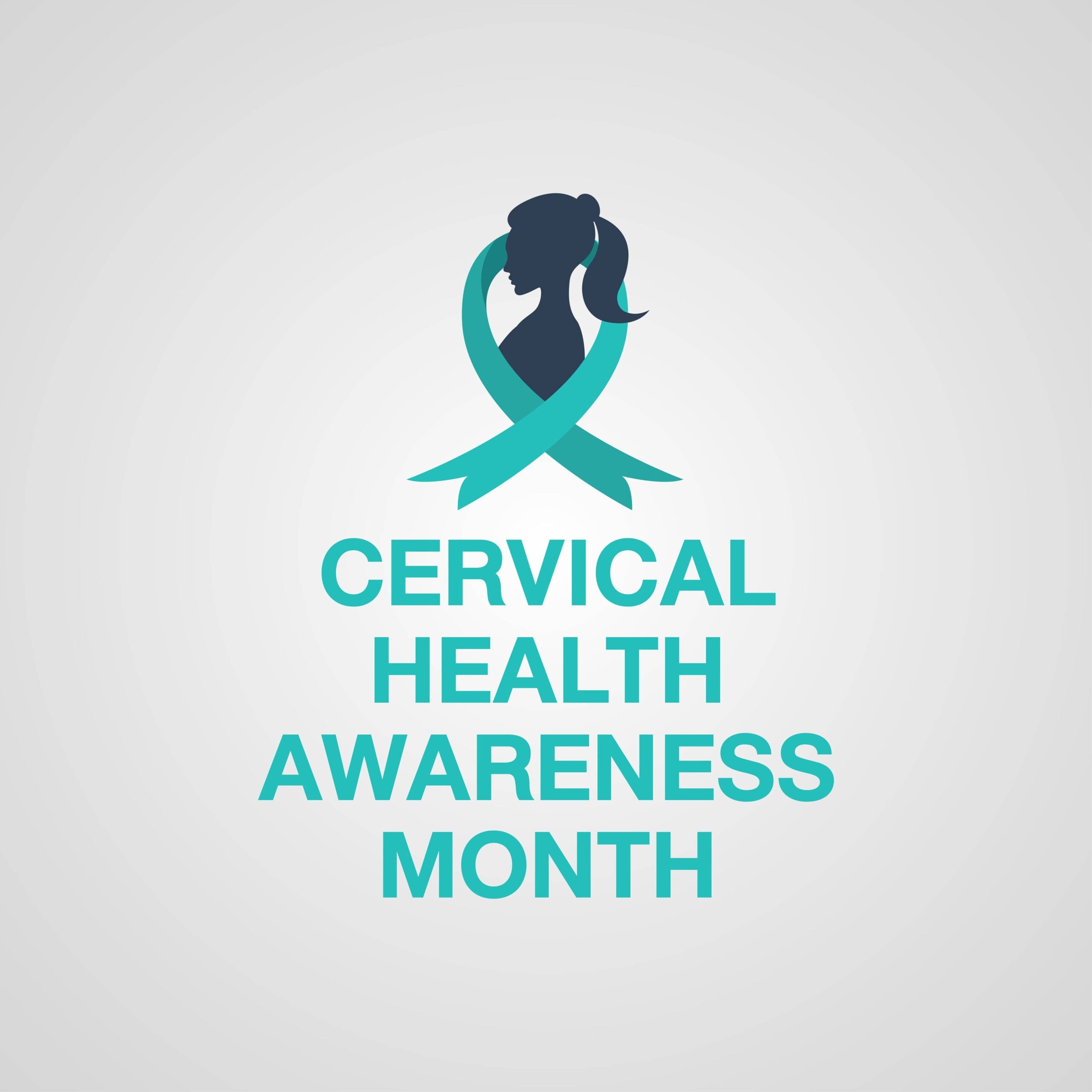
Cervical Cancer Awareness Month
By: Dr. Laura Mantine
The cervix is the organ that provides an opening between the vagina and the uterus. Normally, old or damaged cells in a woman’s cervix will stop dividing and are replaced by healthy, young cells. Cervical dysplasia occurs when these old or damaged cells continue to divide in the superficial layer of the cervix. When cervical dysplasia is not treated, it can grow and spread into the deeper tissues of the cervix, developing into cervical cancer. Cervical cancer is a common malignant tumor of the female reproductive system. In the world, cervical cancer is the third most common type of cancer. However, the use of Pap smear screening has made it far less common in the United States.
Detection
Regular Pap smear screening tests can detect cervical dysplasia long before it develops into cancer. Cervical dysplasia is 100% treatable when identified early. Once cervical cancer has developed, the prognosis varies depending on the cancer’s stage of advancement as well as a woman’s age, general health status and comorbid conditions. It generally does not produce any symptoms in its earliest stages. When symptoms do occur, they may indicate that the cancer has progressed to more advanced stages. Symptoms may include abnormal vaginal bleeding or discharge, low back or pelvic pain, pain during intercourse and periods that are longer and heavier than usual.
Treatment
Treatment of cervical cancer begins with seeking regular medical care throughout a woman’s life. Regular medical care allows a health care professional to best evaluate risks of developing cervical cancer, perform Pap smear screening, and promptly order further diagnostic testing as needed. The goal of cervical cancer treatment is to permanently cure the cancer resulting in complete remission of the disease. Cervical cancer treatment plans are multifaceted and individualized to the type and stage of the cancer with consideration of a patient’s coexisting diseases or conditions. Treatment of cervical cancer or cervical dysplasia may include a combination of surgery, chemotherapy or radiation.
Potential Complications
Cervical cancer can lead to life-threatening complications especially if they go undetected and untreated. Complications are caused by an abnormal rapid growth of old or damaged cells in the cervix that can spread to other organs, such as the lungs, bladder, liver and intestines. Over time, the spread of cancer interferes with organ function and vital body processes. Serious complications can include recurring cervical cancer after treatment and infertility due to treatment.
Hospice Care
In cases in which cervical cancer has progressed to an advanced stage and has become unresponsive to treatment, the goal shifts away from curing the disease and focuses on symptom management. Hospice care is available to help people in their last phases of an incurable illness live as fully and comfortably as possible. Hospice care for a patient with advanced cancer focuses on quality of life and is designed to address a wide range of symptoms including pain, poor appetite, shortness of breath, nausea and vomiting. Hospice patients with advanced cancer experience fewer hospitalizations, emergency calls and invasive procedures. Hospice patients have lower costs of care and greater likelihood of dying in their preferred setting, compared to patients not referred to hospice. Hospice will provide medications and supplies and provide inpatient care when a patient’s symptoms cannot be managed at home. Hospice can also provide around-the-clock care in the home to manage acute symptoms if needed. Also, a hospice clinician is accessible any time of day or night to ensure symptoms are managed as soon as possible. Lastly, hospice care also provides emotional support that benefits advanced cancer patients and their families. Timely and appropriate identification of hospice eligible patients increases the likelihood that patients and their families will benefit from compassionate, end-of-life care.
References:
National Hospice and Palliative Care Organization, NHPCO Facts and Figures, 2018 Edition. Retrieved from: https://www.nhpco.org/research/
American Cancer Society, Cancer Facts & Figures 2019 Retrieved from: https://www.cancer.org/research/cancer-facts-statistics/all-cancer-facts-figures/cancer-facts-figures-2019.html
What are Palliative Care and Hospice Care? 2019. National Institute on Aging. Retrieved from: https://www.nia.nih.gov/health/what-are-palliative-care-and-hospice-care
Teno, et al. (2004). Family perspectives on end-of-life care at the last place of care. JAMA, 7;291(1):88-93

